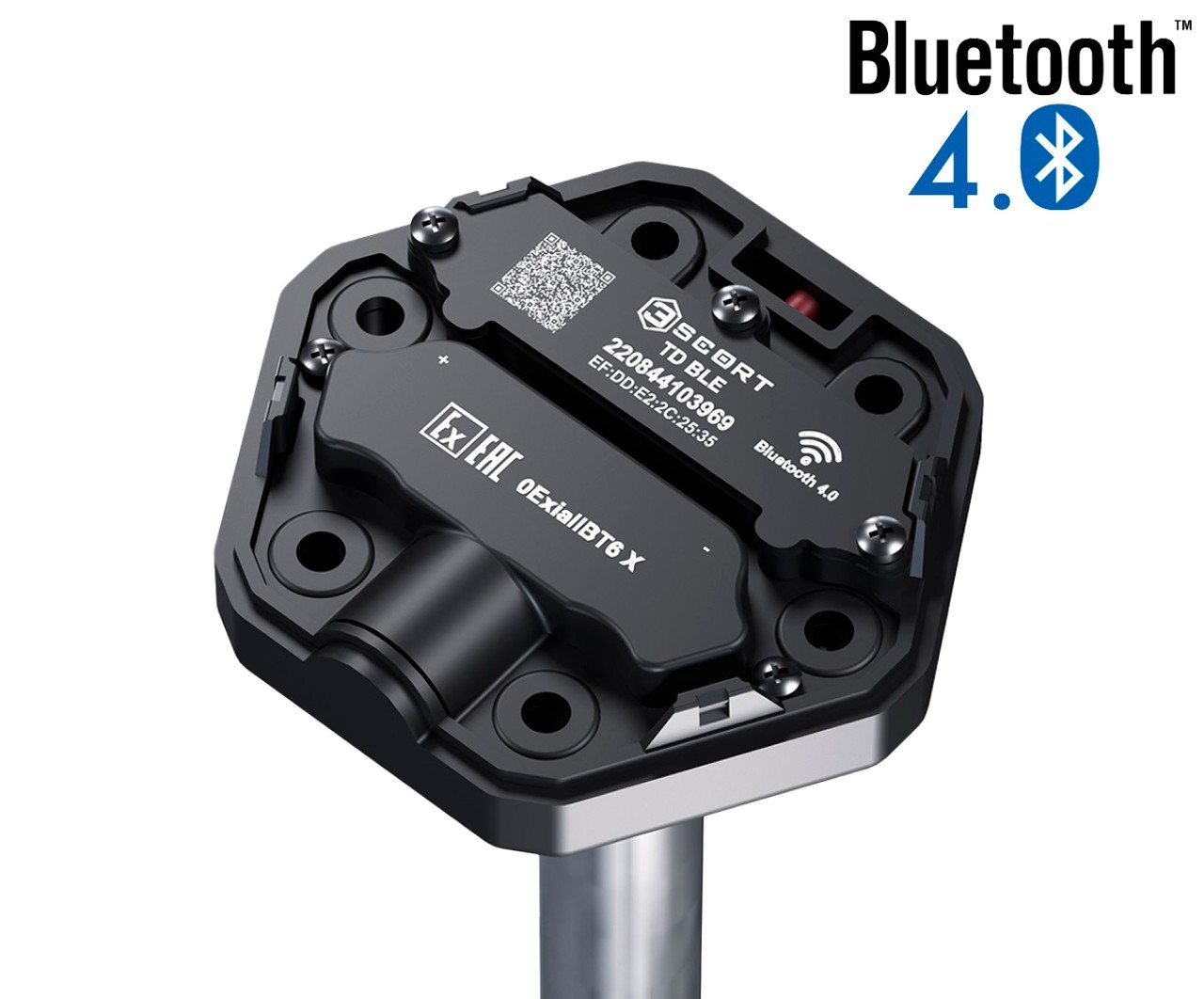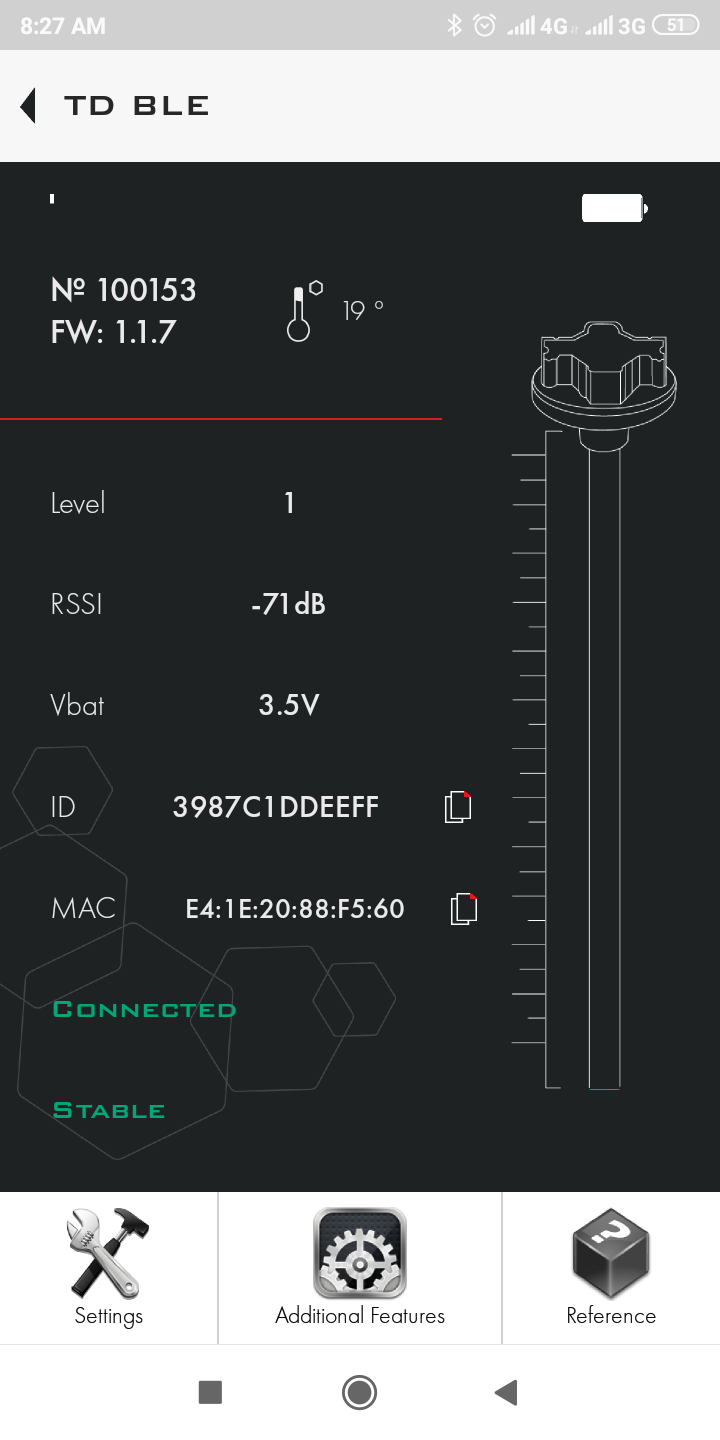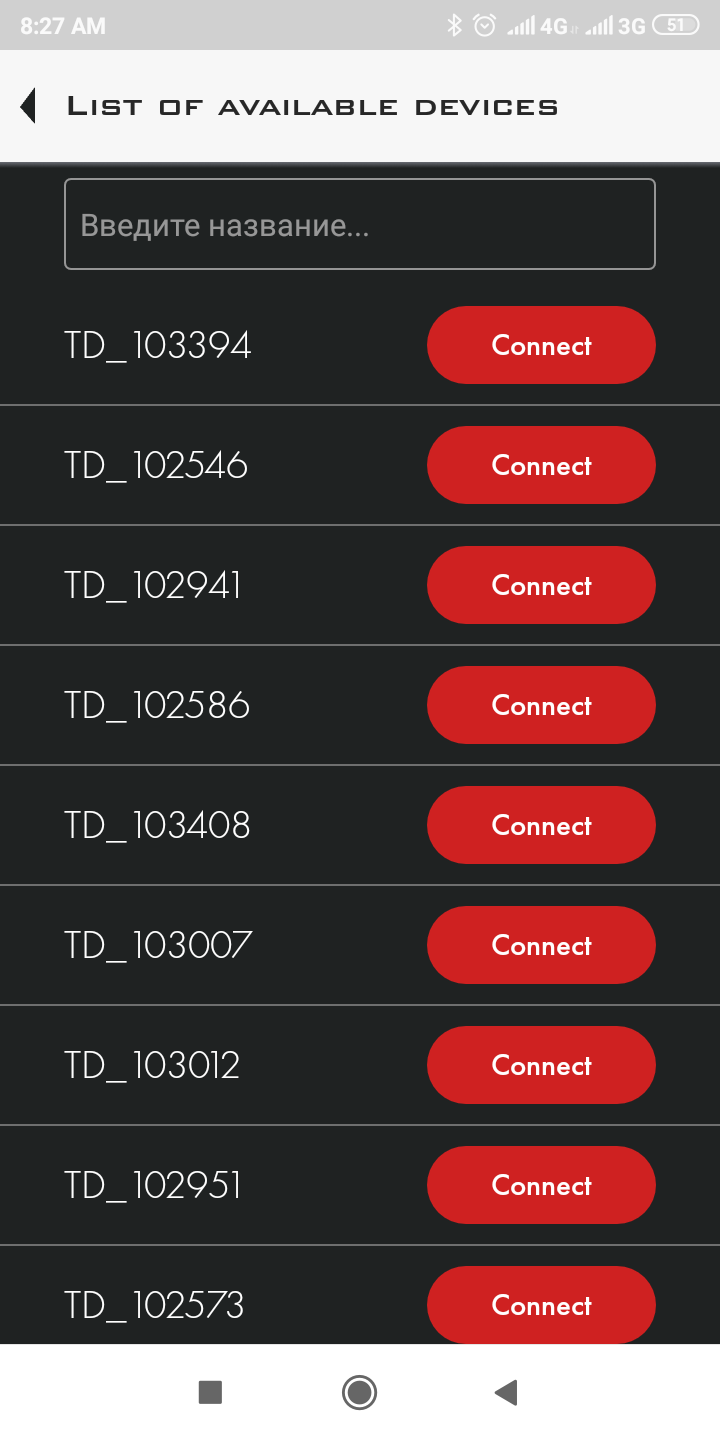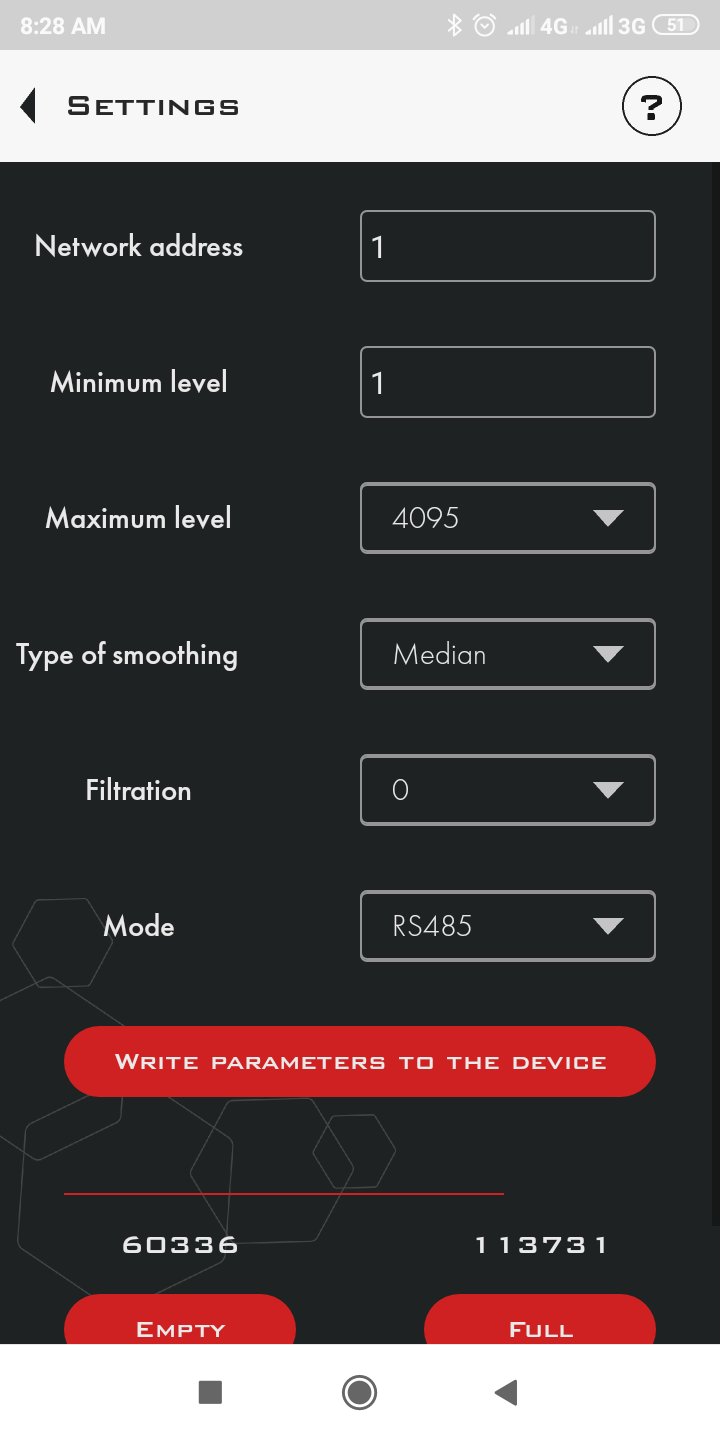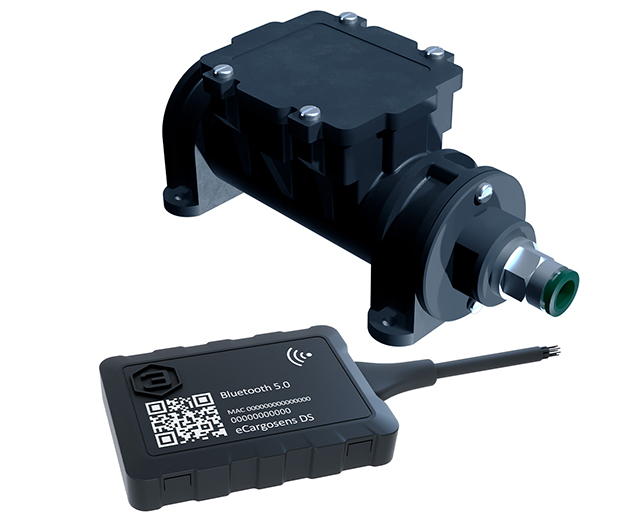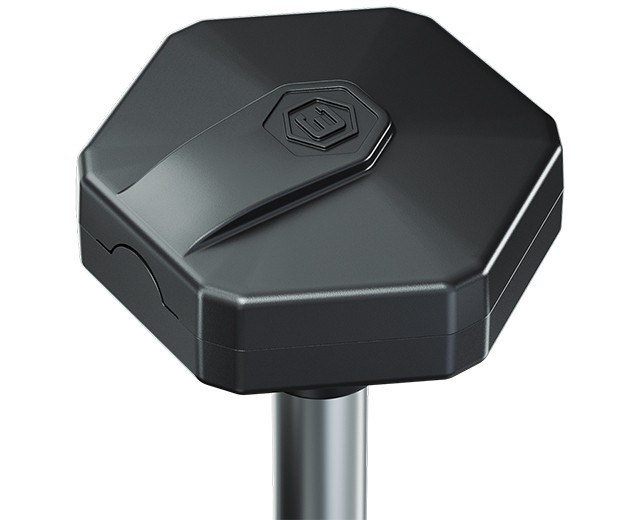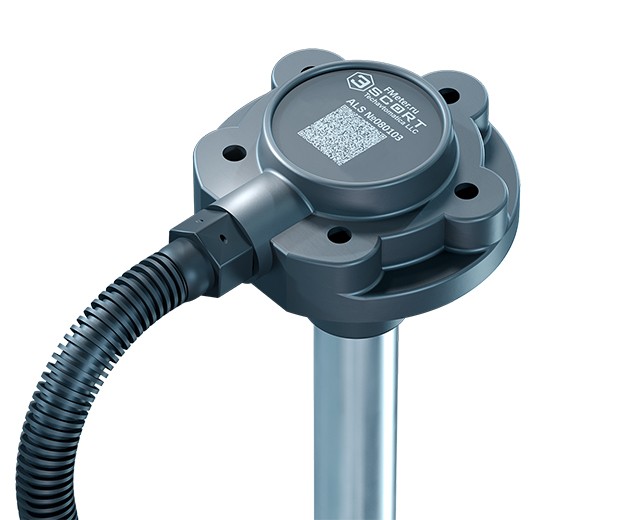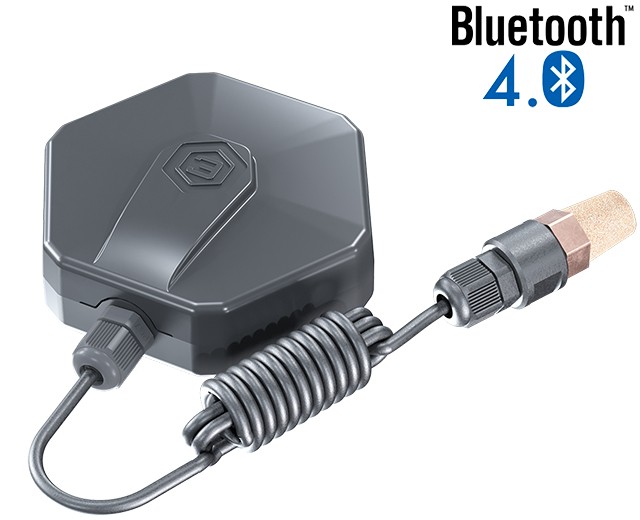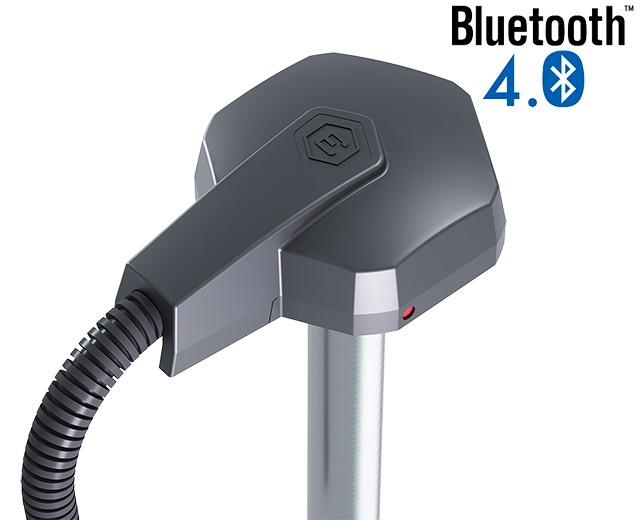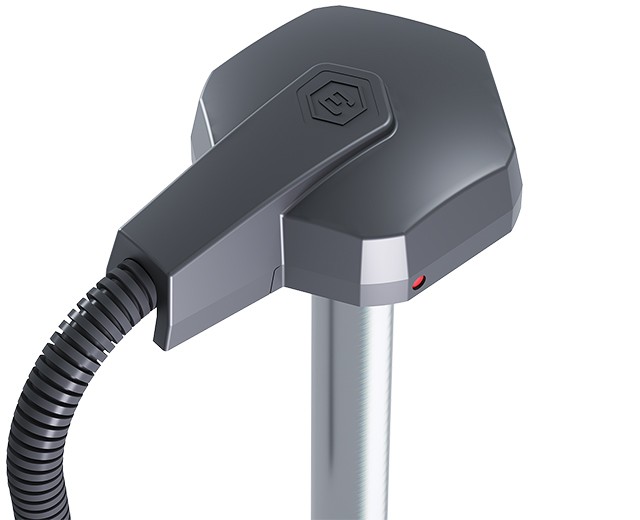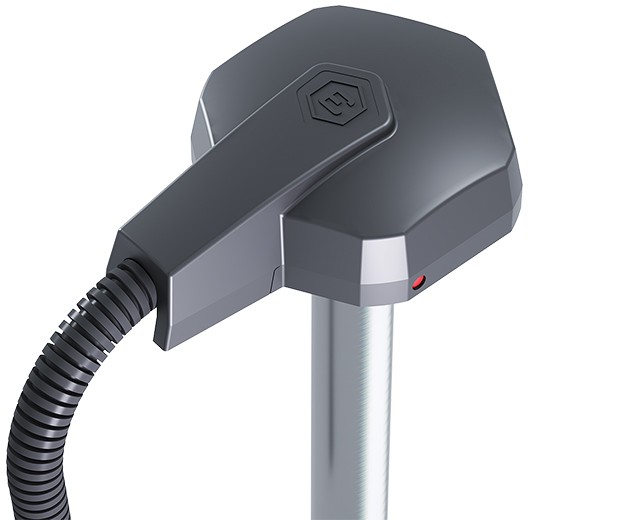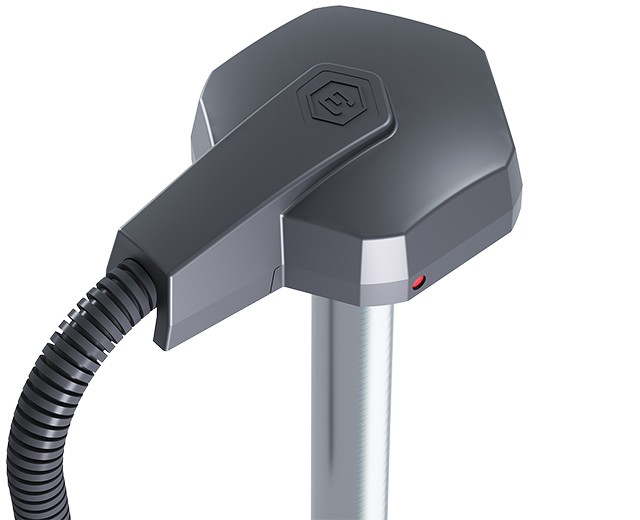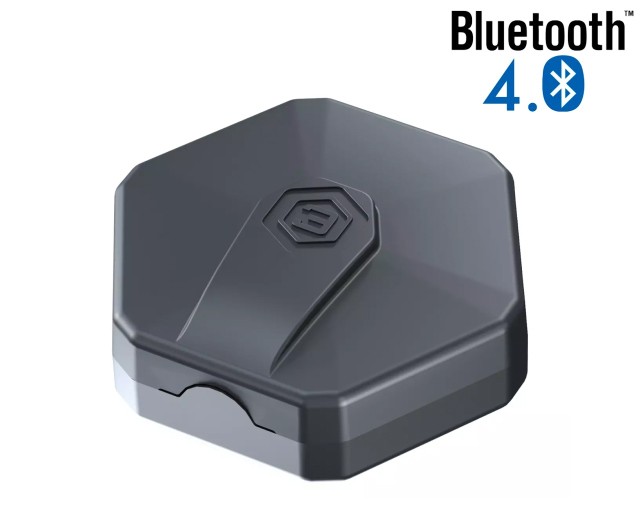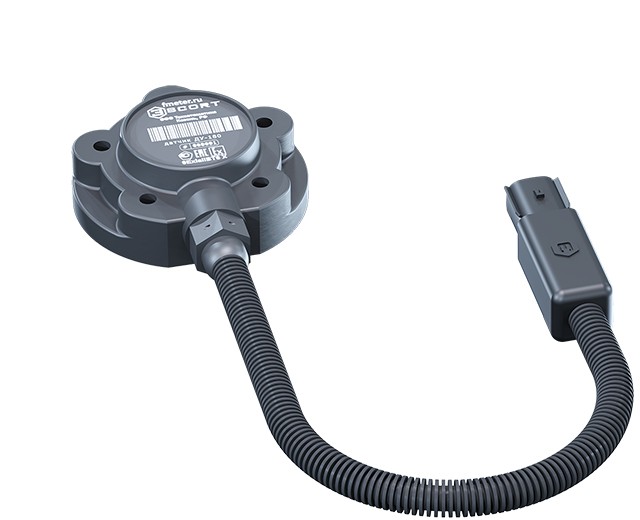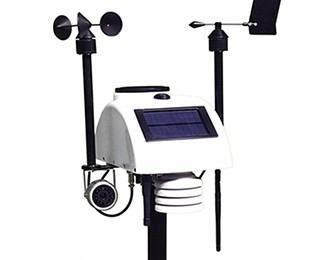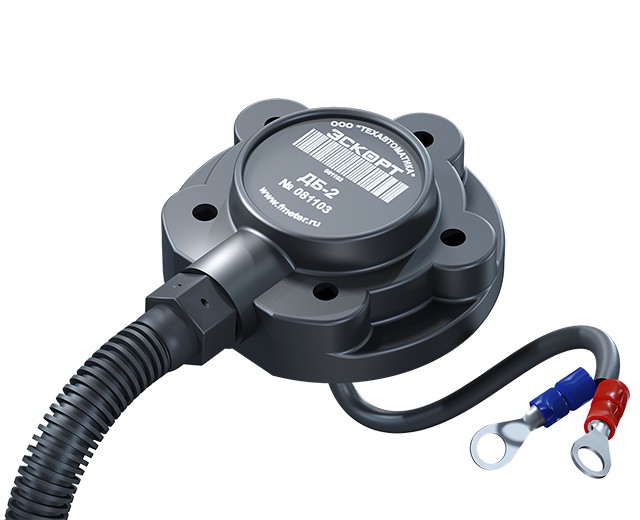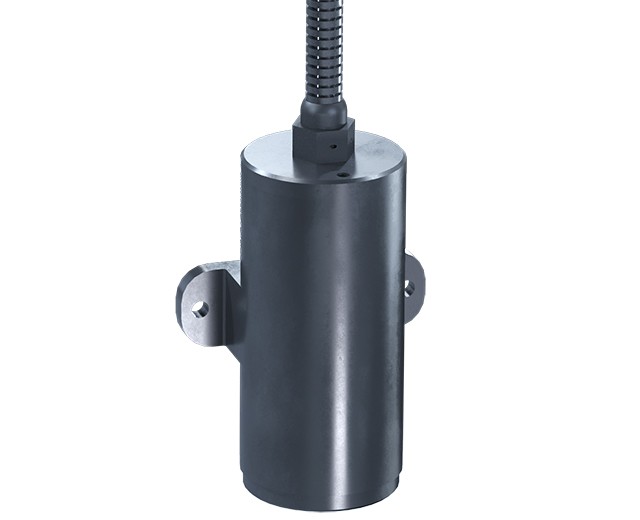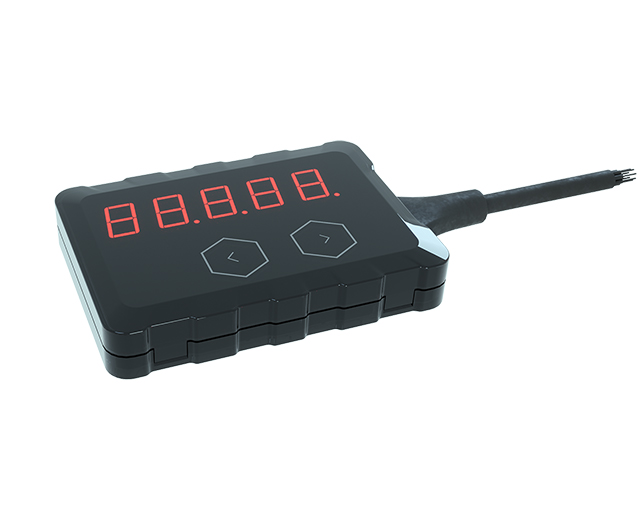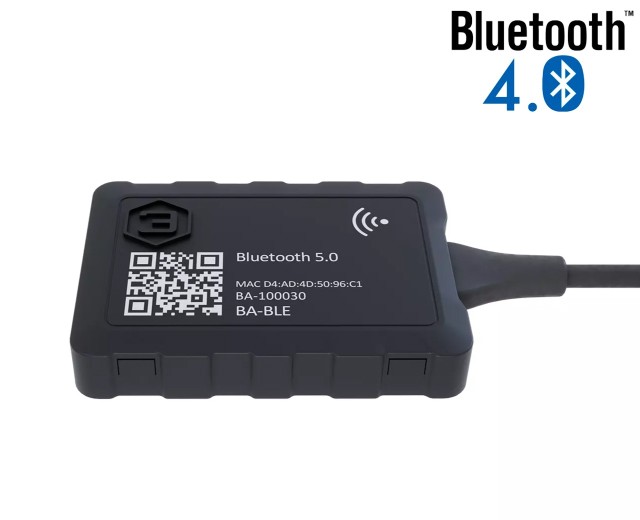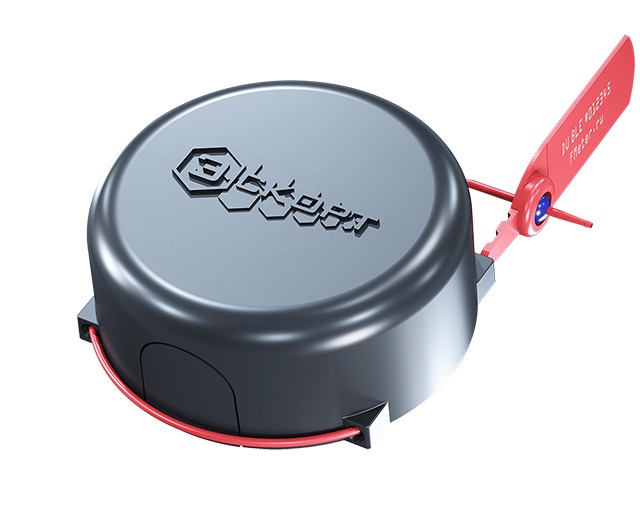Wireless Fuel Level Sensor - Application
A classic application of a wireless fuel level sensor is the control of fuel on commercial vehicles. The sensor itself is traditionally installed in the tank of a vehicle in accordance with the recommendations for installing all other fuel sensors. The advantage of this type of sensor is that there is no need to lay a cable for connecting between the sensor and the data transfer tracker to the monitoring system, which significantly speeds up the installation process, eliminates the need to intervene in the vehicle wiring, eliminates the problem of wear of the connecting wires and the reliability of the connecting connectors. All data is transmitted wirelessly directly to the tracker or to the BLE-RS485 receiver if the tracker model is outdated and does not support direct connection via a wireless communication channel. Data from the tracker is transmitted to the monitoring system, which allows you to control all data on gas stations, fuel consumption and possible fuel drain, with the exact time, date and location of the vehicle being monitored.
Wireless fuel level sensor in stationary storage tanks
In stationary fuel storage tanks, at gas stations in other facilities, it is often not very convenient to lay a cable between a wired fuel level sensor and a data transfer tracker, given that a tracker with a fuel level sensor must be powered up for data transfer. Placing the battery directly at the fuel storage tank may raise issues with the security of the solution being implemented. In this case, the ideal solution would be to distribute the fuel level sensor and tracker. A wireless fuel level sensor is installed in the fuel storage tank, which has the necessary explosion protection certificate, which transfers data to the tracker remotely. Only the tracker itself, which is located at a safe distance from the stationary fuel storage capacity, is connected to an external power source.
Wireless fuel level sensor for aircraft
An interesting solution for our customers was the use of a wireless fuel level sensor in light-engine aircraft. Fuel consumption in aviation is highly dependent on many factors, weather conditions, direction and strength of the wind, and the conditions for completing the flight mission. Knowing the exact remaining fuel in the tank during aircraft flights is a critical safety issue, when it is often difficult and structurally not possible to extend the extra wires between the tank and the dashboard. In such cases, a wireless fuel level sensor is an ideal solution for monitoring fuel in the tank. The sensor is installed in the tank of aircraft, recall that it can be shortened up to 15 cm in length. An indicator of the remaining fuel in the tank is installed in the cabin, receiving data using the BLE-RS485 receiver, which, in turn, is connected to the sensor via a wireless communication channel. T.O. a sensor is installed separately in the tank, a separate indicator on the dashboard and the remaining fuel in the tank is already controlled using a high-precision wireless capacitive type fuel level sensor. With our sensor, the pilot in the cockpit always knows exactly the remaining fuel in the tank to calculate the duration of the flight and will always return home on time.
Wireless fuel level sensor in a train locomotive
The design features of the fuel tank of a train locomotive often do not allow easy access to it for reliable fastening of the wiring from the fuel sensor to the tracker. The thickness of the tank, its location, lack of free space create difficulties for wired connection of sensors. In this case, installing a wireless fuel level sensor allows you to solve the problem of connecting the fuel level sensor to the tracker for reliable fuel control in the tank of the train locomotive.
Wireless fuel level sensor at BELAZ in mining and mining
The main problem of installing a wired fuel sensor at BELAZ and special equipment in mining and mining are operating conditions. When working with strong vibration, dustiness, loading and unloading operations, precipitating stones, ore, mined material, sharp corners and various weights - additional wiring often fails, fray and breakage of the sensor’s connection with the tracker. Installing a wireless fuel sensor allows you to get rid of problems with the wiring to the tracker and get a reliable wireless solution for fuel control in the tanks of special equipment. The wireless fuel sensor also has a protective cover, which allows you to strengthen the protection of the “head” of the sensor.
Wireless fuel level sensor for agricultural machinery
In agricultural machinery, the fuel tank is often located outside and the installation of a wired sensor carries the safety risks of wiring between the FLS and the tracker, which, as a rule, is installed in the equipment cabin. Outdoor wiring assumes all risks of field operation, which may not always be ideal. Therefore, often, when installed on agricultural machinery, the connecting wiring between the sensor and the tracker frays, breaks, and fails. Which entails additional costs for traveling and restoring the installed equipment. The cardinal solution to this problem is to install a wireless fuel level sensor, there are no wires - there are no problems with breaks and there are no additional costs for restoration.


